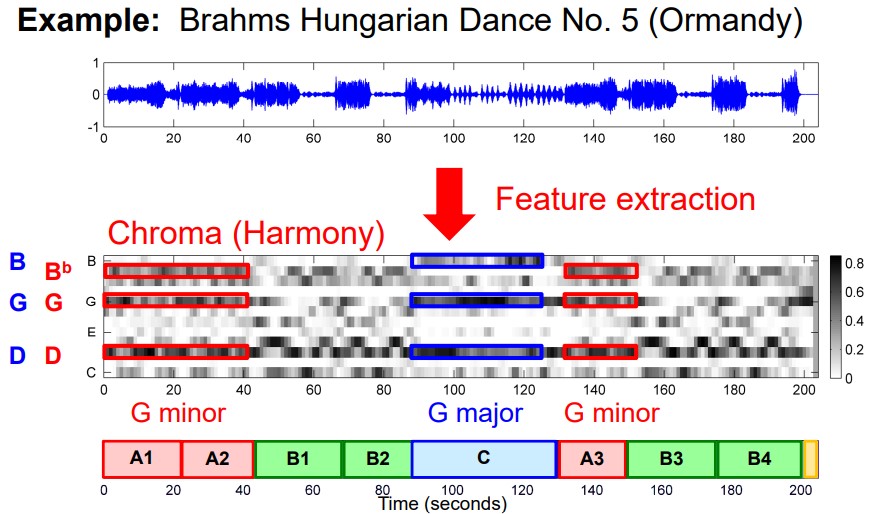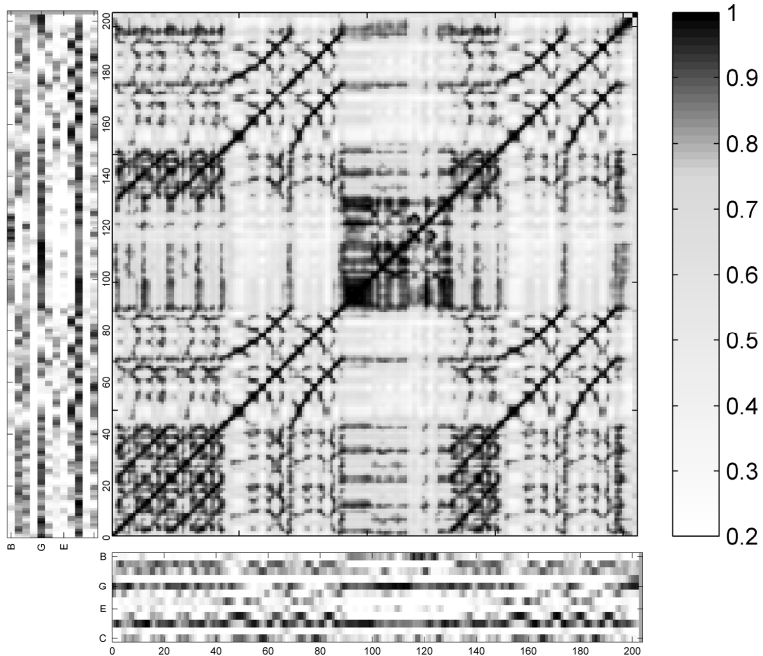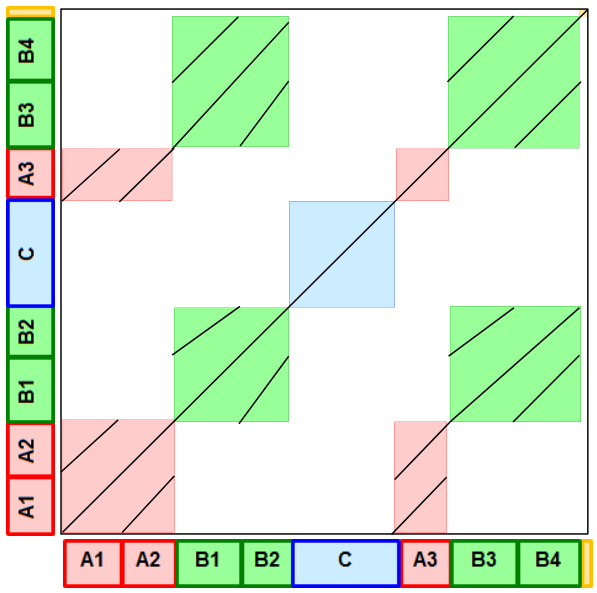5. Music Structure Analysis
5.1 Introduction
General goal: Divide an audio recording into temporal segments corresponding to musical parts, and group these segments into musically meaningful categories.
Examples:
- Stanzas of a folk song
- Intro, verse, chorus, bridge, outro sections of a pop song
- Exposition, development, recapitulation, coda of a sonata
- Musical form ABACADA ... of a rondo
Challenge: There are many different principles for creating relationships that form the basis for the musical structure.
- Homogeneity: Consistency in tempo, instrumentation, key, ...
- Novelty: Sudden changes, surprising elements ...
- Repetition: Repeating themes, motives, rhythmic patterns ...
Feature Representations: Convert an audio recording into a mid-level representation that captures certain musical properties while supressing other properties

5.2 Self-Similarity Matrix (SSM)
General idea: Compare each element of the feature sequence with each other element of the feature sequence based on a suitable similarity measure.
e.g. Brahms Hungarian Dance No. 5 (Ormandy)

The corresponding idealized SSM (which can be approximated using SSM enhancement) exaggerating the important features looks like:

- Blocks: Homogeneity
- Paths: Repetition
- Corners of Blocks: Novelty
According to these features in SSMs, we can divide music into finer structures: A1, A2, B, ...
Tool: MATLAB Similarity Matrix Toolbox
5.3 Audio Thumbnailing
General goal: Determine the most representative section ("Thumbnail", often assumed to be the most repetitive segment) of a given music recording.
TODO: path family